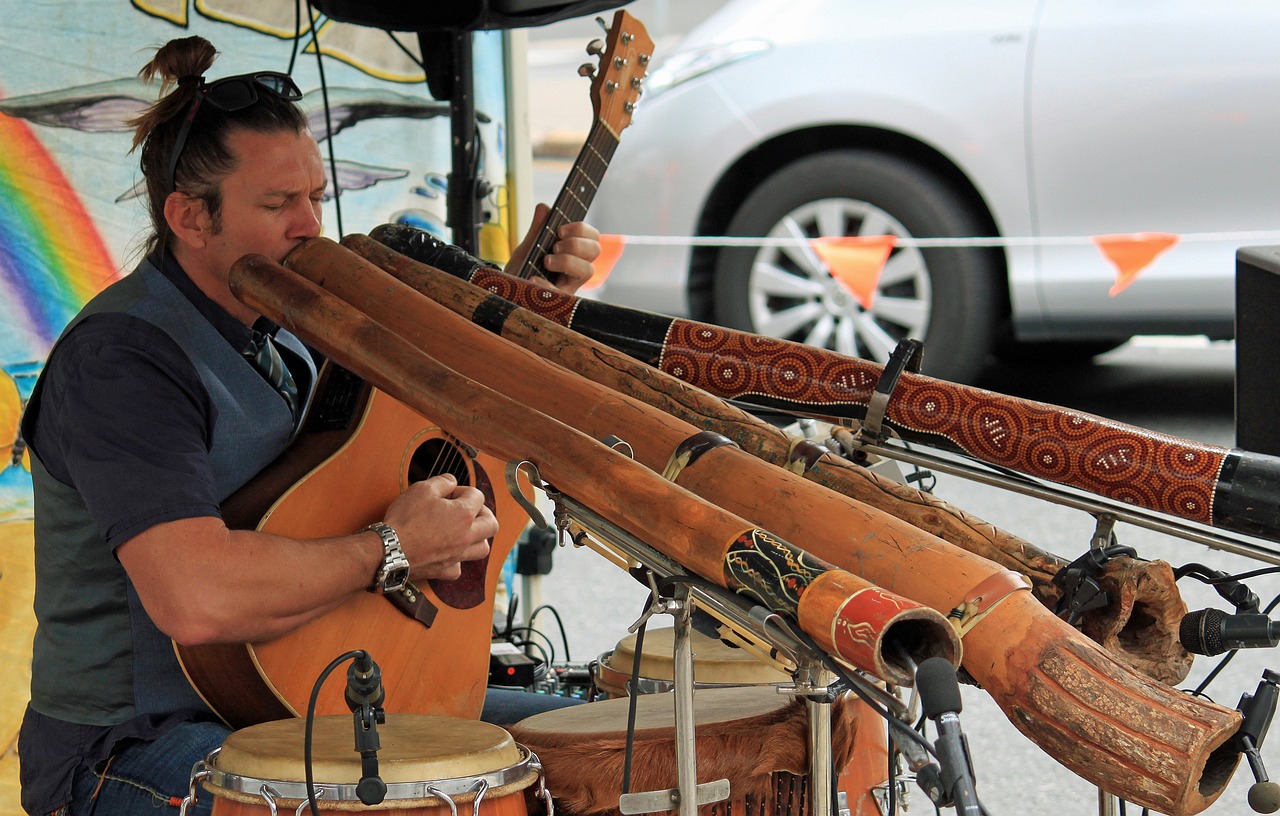Didgeridoos, the ancient wind instruments from Australia, are not only renowned for their mesmerizing sounds but are also revered for their powerful healing abilities. Used in traditional aboriginal ceremonies for thousands of years, these instruments create deep, resonant frequencies that can promote physical, emotional, and spiritual healing.
Whether you’re a seasoned practitioner or a beginner, setting up Didgeridoos for healing purposes requires thoughtful preparation, understanding of the instrument, and clear intention. Here, you’ll learn the best way to set up Didgeridoos for healing.
1. Understanding the Healing Power of Didgeridoos
Before diving into the practical setup, it’s essential to grasp how Didgeridoos promote healing. The sound produced by a didgeridoo is not just musical but vibrational. It emits low-frequency sound waves that resonate deeply within the body. These vibrations can help release tension, clear energy blockages, and stimulate the body’s natural healing processes.
Didgeridoos create what is known as a “drone” — a continuous, low-pitched tone. This drone has been found to:
- Induce relaxation: The deep sound can lead the brain into a meditative state, reducing stress and anxiety.
- Promote physical healing: Vibrations from the didgeridoo can aid in releasing muscle tension and promoting circulation.
- Balance energy: The sound resonates with the body’s energetic field, helping to restore balance and clear stagnant energy.
With this understanding, setting up a didgeridoo healing session requires creating a space and approach that maximizes these vibrational effects.
2. Choosing the Right Didgeridoo for Healing
Didgeridoos come in various sizes, materials, and keys. The type of didgeridoo you select plays a significant role in the healing experience you provide. Here are the factors to consider when choosing your instrument:
Length and Pitch
- Longer Didgeridoos produce deeper sounds, which are often more effective for grounding and calming purposes. These lower frequencies resonate with the body’s lower chakras (such as the root chakra), making them suitable for physical healing.
- Shorter Didgeridoos, with higher pitches, are more invigorating and can work with the upper chakras, such as the throat and crown chakras. These higher frequencies are ideal for enhancing mental clarity and spiritual awareness.
Material
- Traditional Eucalyptus: Authentic Australian Didgeridoos are often made from hollowed-out eucalyptus trees. These instruments are highly revered for their natural resonance and deep connection to the Earth’s energy.
- Modern Materials: Today, Didgeridoos are also made from PVC, bamboo, and synthetic materials. While these are more affordable and accessible, they may not produce the same richness of sound as traditional wood instruments.
Key Selection
The key of a didgeridoo determines its pitch. Popular keys for healing work are D, C, and E. A didgeridoo in the key of D offers a deep, soothing sound perfect for relaxation, while a didgeridoo in C can be used for more intense vibrational therapy.
3. Creating a Healing Space
The environment in which you play the didgeridoo has a profound impact on the healing experience. A calm, sacred space helps amplify the instrument’s effects. Here’s how to set up an ideal healing environment:
1. Soundproof and Quiet Area
Find a room or space that minimizes external noise. A quiet, undisturbed environment will help focus the healing session on the didgeridoo’s sound and vibrations. If possible, choose a room with good acoustics to allow the vibrations to fill the space naturally.
2. Comfortable Setting for the Recipient
Ensure that the person receiving the healing is comfortable. A massage table, a yoga mat, or a comfortable chair with support for the back and head is ideal. Encourage the recipient to wear loose, comfortable clothing to fully relax and absorb the sound vibrations.
3. Incorporating Healing Elements
To enhance the spiritual and therapeutic atmosphere, consider adding elements such as:
- Crystals: Place healing crystals around the room or on the recipient’s body to amplify the healing energy.
- Incense or Essential Oils: Scents like lavender, sandalwood, or frankincense can create a peaceful ambiance and further relax the recipient.
- Soft Lighting: Dim lighting or candlelight adds to the calming effect of the space.
4. Techniques for Playing Didgeridoos in Healing Sessions
Once your space is set, it’s time to focus on the techniques used for healing with the didgeridoo. The way you play the instrument directly affects the quality and depth of the healing experience. Below are some key techniques to keep in mind:
1. Circular Breathing
Circular breathing is a fundamental technique for playing the didgeridoo. It allows you to produce a continuous drone without interruption. Mastering this technique will enable you to maintain a consistent vibration, helping the recipient to fall into a deep meditative state.
To circular breathe, breathe in through your nose while simultaneously pushing air out of your mouth, using your cheeks as bellows. It takes practice, but once mastered, this technique is invaluable for maintaining a steady tone.
2. Intention and Mindfulness
When using Didgeridoos for healing, it’s crucial to set a clear intention before you begin playing. Whether your goal is to release blocked energy, promote relaxation, or support emotional healing, your intention will guide the energy flow during the session.
As you play, focus your mind on your intention. You can also visualize the sound waves penetrating the body, breaking up energy blockages, or stimulating healing within specific areas of the body.
3. Playing Close to the Body
For deeper physical healing, position the didgeridoo close to the recipient’s body, targeting specific areas that need healing, such as the chest, abdomen, or legs. The vibrations will travel through the body, promoting circulation and helping to release tension in muscles and tissues.
Be mindful of the distance between the didgeridoo and the body; getting too close may cause discomfort, while playing from too far away may reduce the intensity of the vibrations. A good rule of thumb is to play about 6 to 12 inches from the recipient’s body.
4. Incorporating Vocalization
Adding vocal tones while playing the didgeridoo can enhance the healing experience. Some players hum or vocalize into the didgeridoo, creating complex overtones that deepen the sound. These overtones can target different areas of the body and chakras, making the healing session more dynamic and tailored to the recipient’s needs.
5. Using Didgeridoos for Self-Healing
Didgeridoos are not only effective tools for healing others but also powerful instruments for self-healing. By playing the didgeridoo, you engage in a meditative practice that can help release emotional blockages, reduce stress, and promote a sense of grounding.
1. Grounding and Centering Practice
To use a didgeridoo for self-healing, start by sitting in a comfortable position, with your feet grounded on the floor. As you begin to play, focus on the vibrations traveling through your body, especially in your lower chakras. This grounding effect can help you release anxiety, fear, or feelings of being uncentered.
2. Breath Control for Stress Relief
Playing the didgeridoo requires controlled, mindful breathing, which in itself is a meditative practice. Circular breathing helps slow your heart rate and induces a state of relaxation. Over time, regular practice can help improve your ability to manage stress and regulate your emotions.
3. Chakra Balancing
While playing the didgeridoo, focus on specific chakras or areas of your body that feel blocked or stagnant. Use your intention to direct the sound vibrations into those areas. You can even visualize the sound waves breaking up negative energy and restoring balance.
6. Closing the Healing Session
After playing the didgeridoo for healing, it’s important to properly close the session. This ensures that the recipient has fully integrated the healing energy and returns to a balanced state.
1. Gradual Toning Down
As you near the end of the session, gradually reduce the intensity of the sound. Play slower, softer notes to ease the recipient back into a normal state of consciousness. Abruptly stopping the sound can be jarring, so it’s best to taper off gently.
2. Grounding
After the session, encourage the recipient to take a few deep breaths and ground themselves. You can suggest that they visualize roots extending from their feet into the Earth, drawing in stable, grounding energy.
3. Reflection and Feedback
Allow the recipient time to reflect on their experience. Ask them to share any sensations or emotions they felt during the session. This feedback will help you refine your technique and understand how the sound vibrations affected their body and energy field.
Wrapping Up:
Setting up Didgeridoos for healing is a profound practice that taps into the ancient power of sound and vibration. By selecting the right didgeridoo, creating a conducive healing environment, and mastering key playing techniques, you can facilitate deep, transformative healing experiences for yourself and others.
Whether you are targeting specific physical ailments, emotional blockages, or seeking to enhance your spiritual practice, the didgeridoo is a versatile tool that offers countless benefits. Embrace this sacred instrument, and let its vibrations guide you on a path of healing and self-discovery. Hopefully, now you know how to set up Didgeridoos for healing.


